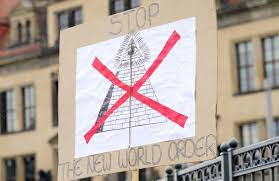DICED is UN’s Environmental Constitution for the World
 I am sure there are many Americans who have no idea nor care what “The Draft International Covenant on Environment and Development” (DICED) is. They should. Some call the Draft Covenant “Agenda 21 on steroids” while others see it as the Environmental Constitution of global governance.”
I am sure there are many Americans who have no idea nor care what “The Draft International Covenant on Environment and Development” (DICED) is. They should. Some call the Draft Covenant “Agenda 21 on steroids” while others see it as the Environmental Constitution of global governance.”
The first version of the Covenant was presented to the United Nations in 1995 on the occasion of its 50th anniversary. It was hoped that it would become a negotiating document for a global treaty on environmental conservation and sustainable development.
The fourth version of the Covenant, issued on September 22, 2010, was written to control all development tied to the “the highest form of law for all human activity.’
The Covenant’s 79 articles, described in great detail in 242 pages, take Sustainable Development principles described in Agenda 21 and transform them into global law, which supersedes all constitutions including the U.S. Constitution. All signatory nations, including the U.S., would become centrally planned, socialist countries in which all decisions would be made within the framework of Sustainable Development.
In collaboration with Earth Charter and Elizabeth Haub Foundation for Environmental Policy and Law from Canada, the Covenant was issued by the International Council on Environmental Law (ICEL) in Bonn, Germany, and the International Union for Conservation of Nature (IUCN) with officesin Gland, Switzerland and Cambridge, UK.
Federal agencies that are members of the International Union for Conservation of Nature (IUCN) include U.S. Department of State, Commerce, Agriculture (Forest Service), Interior (Fish and Wildlife, National Park Service), and the Environmental Protection Agency (EPA). The same agencies are members of the White House Rural Council and the newly established White House Council on Strong Cities, Strong Communities (Executive Order, March 15, 2012).
The Draft Covenant is a blueprint “to create an agreed single set of fundamental principles like a ‘code of conduct’ used in many civil law, socialist, and theocratic traditions, which may guide States, intergovernmental organizations, and individuals.”
The writers describe the Covenant as a “living document,” a blueprint that will be adopted by all members of the United Nations. They say that global partnership is necessary in order to achieve Sustainable Development, by focusing on “social and economic pillars.” The writers are very careful to avoid the phrase, “one world government.” Proper governance is necessary on all levels, “from the local to the global.” (p.36)
The Covenant underwent four writings, in 1995, 2000, 2004, and 2010, influenced by the Johannesburg World Summit on Sustainable Development, by ideas of development control and social engineering by the United Nations, “leveling the playing field for international trade, and having a common basis of future lawmaking.”
- Article 3 proposes that the entire globe should be under “the protection of international law.”
- Article 11 discusses “equity” and “equitable manner” which are code words for communism.
- Article 16 requires that all member nations must adopt environmental conservation into all national decisions.
- Article 20 requires that all nations must “mitigate the adverse effects of climate change.” If we ratify this document, we must thus fight a non-existent man-made climate change.
- Article 31 requires the eradication of poverty by spreading the wealth from developed nations to developing countries.
- Article 32 requires recycling.
- Article 33 demands that countries calculate “the size of the human population their environment is capable of supporting and to implement measures that prevent the population from exceeding that level.”
- Article 33 delineates long-term resettlement and estimating the “carrying capacity of the environment.”
- Article 34 demands the maintenance of an open and non-discriminatory international trading system in which “prices of commodities and raw materials reflect the full direct and indirect social and environmental costs of their extraction, production, transport, marketing, and where appropriate, ultimate disposal.” The capitalist model of supply and demand pricing does not matter.
- Article 36 describes military and hostile activities.
- Article 39 decides management plans and quotas for permissible taking or “harvesting transboundary biological resources.”
- Article 41 requires integrated planning systems, irrespective of administrative boundaries within a country, and is based on Paragraph 10.5 of Agenda 21, which seeks to “facilitate allocation of land to the uses that provide the greatest sustainable benefits and to promote the transition to a sustainable and integrated management of land resources.” The impact assessment procedure is developed by the World Bank.
“Aquifers, drainage basins, coastal, marine areas, and any areas called ecological units must be taken into account when allocating land for municipal, agricultural, grazing, forestry, and other uses.” Agricultural subsidies are discouraged, as well as subsidizing private enterprises.
“Physical planning must follow an integrated approach to land use – infrastructure, highways, railways, waterways, dams, and harbors. Town and country planning must include land use plans elaborated at all levels of government.” - Article 48 demands that biotechnology from research and development and royalties be shared; free access and transfer of technology is also required.
- Article 51 reveals that we will have to pay for these repressive new requirements while Article 52 shows that we must pay 0.7 percent of GDP for Official Development Assistance. This reaffirms the political commitment made in Paragraph 33.13 of Agenda 21 in 1992.
- Article 69 deals with settlement of disputes by an arbitrary tribunal such as the Permanent Court of Arbitration, the International Court of Justice, or the International Tribunal for the Law of the Sea.
- Article 71 describes the amendment process, which is submitted to the Secretary-General of the United Nations. UN Secretary-General would review the implementation of this document every five years.
Writers of the Draft Covenant are the UN Secretariat, international lawyers, and U.S. professors from Cornell, Princeton, Pace University, Middlebury College, George Washington University Law School, Bucknell University, University of Indiana, University of Wisconsin-Stevens Point, Meadville Theological School, University of the Pacific, two General Counsel Representatives from the Environmental Protection Agency, and two attorneys in private practice.
Since this Draft Covenant has a Preamble and 79 articles, it is obviously intended to be a world constitution for global governance, an onerous way to control population growth, re-distribute wealth, force social and “economic equity and justice,” economic control, consumption control, land and water use control, and re-settlement control as a form of social engineering.
Source:
Debbie Coffey—Agenda 21 on Steroids



